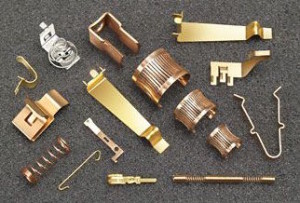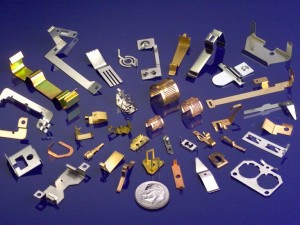It’s often overlooked or perhaps under-thought, how the various products you are using operate. What string of events is happening that enables you to change the channel by pressing a button or change the temperature by turning a knob? Let’s look at turning on a light, for example. You flip your light switch and the light comes on; that’s all that is happening, right? Not exactly. In actuality, that light switch is actually an electrical switch, and when you flip it (ON), you’re completing its connection, thus turning the light on. But how is the power coming to that light? Well, on the other side of the process, there is an electrical relay connecting the electrical breaker to the switch, supplying its power. People may regard the process as just simply flipping a switch, but there are actually multiple steps taking place to make that simplicity happen. An interesting fact about those parts mentioned – electric switches, relays, and breakers- is that they, along with other countless electrical parts, cannot function without electrical spring contacts. The same can be said for battery contacts, as well, that you rely on every day while watching TV, remote starting your car, using a flashlight, or talking on the phone. Let’s take a look at some of the different forms of contact springs available, and which can work best for your project.
Electrical Spring Contacts
If you find yourself planning to work on or with an electrical circuit component, then electrical contact springs are the pieces you’ll likely need to use for your project. In order to know which type you require, you first will need to know the various styles and options available in the market today. There are numerous options available and, if you are ordering from someone who offers custom material plating, those options can grow tenfold.
Preferred Electrical Contact Spring Materials
- Beryllium Copper
- Aluminum
- High Carbon Steel
- Low Carbon Steel
- Stainless Steel
- Brass
- Phosphor Bronze
- Nickel
 When it comes to determining which material you want to utilize, there are numerous factors that can help you in determining your best option. One of the big factors would be conductivity. Conductivity is the level at which a specified material conducts electricity. It is calculated through the ratio of the current density of the material to the electric field that causes its current to flow. If high conductivity is an interest of yours, our recommendation would be to go with a material like Beryllium Copper, as it is rated at 38% on the IACS Conductivity Chart. That rating is related to the conductivity of annealed copper, which is defined to be 100% IACS at 20° C.
When it comes to determining which material you want to utilize, there are numerous factors that can help you in determining your best option. One of the big factors would be conductivity. Conductivity is the level at which a specified material conducts electricity. It is calculated through the ratio of the current density of the material to the electric field that causes its current to flow. If high conductivity is an interest of yours, our recommendation would be to go with a material like Beryllium Copper, as it is rated at 38% on the IACS Conductivity Chart. That rating is related to the conductivity of annealed copper, which is defined to be 100% IACS at 20° C.
 In addition to these material options, you can also see effects on your electrical contact spring via any plating or finishing that is done pre-or-post stamp. Sticking with Beryllium Copper as an example, a usual finishing treatment you see done is heat treating to increase hardness in order for the contact to hold its shape under extreme heat. Beyond heat treating, there is also tumbling, deburring, and plating finishing options.
In addition to these material options, you can also see effects on your electrical contact spring via any plating or finishing that is done pre-or-post stamp. Sticking with Beryllium Copper as an example, a usual finishing treatment you see done is heat treating to increase hardness in order for the contact to hold its shape under extreme heat. Beyond heat treating, there is also tumbling, deburring, and plating finishing options.
Battery Contacts
Just as important as electrical contact springs, battery contact springs are a necessity for everything from personal use items (toys, cameras, phones, remotes) to safety items (emergency home detectors, flashlights, alarms) to military items (mobile military GPS systems). Just like with electrical contacts, there are certain materials you’ll want to aim for when focusing on battery contacts.
Preferred Electrical Contact Spring Materials 
- Beryllium Copper
- Phosphor Bronze
- Stainless Steel
- Carbon Steel
You may notice Beryllium Copper on the top of this list as well. That is because, in addition to the high conductivity alloys that are used, Beryllium Copper is a high strength alloy that can give the same force as carbon steel at a fraction of the thickness. In some instances, a battery contact can have a thickness of 0.003”, smaller than the width of a human hair. Furthermore, you’ll also find that Beryllium Copper allows for greater elasticity ad formability, so you won’t need to worry about the contact wearing out.
Whichever battery contact material you find ideal, it will be a benefit to know that those contacts were stamped from some of the industries best techniques and machines. Fourslide stamping, for example, allows for precision stamping while being more efficient both in cost and time.
What Should My Process Be?
So you’ve figured out what type of contact you need- including style, shape, material, platings, and finishings- now what? Your best course of action is to contact a metal spring manufacturer with what you are looking for. Even if you’re not entirely sure on all the details of what you need, their expert staff should be able to help you determine what will fit your project best and build an agreeable timeline for you. From your requirements, they will develop the contact the best fits your needs while continuously monitoring during all phases of production. Whether you are looking for a short run metal stamping production or a bigger, larger volume progressive die stamping services order, our in-house experts here at Atlantic Precision Spring can help you along the way to get the exact custom stamped contact springs you need.